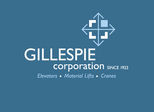- Glenn Siegel
- Dec 14, 2019
Most jazz fans are aware that the music we love is a worldwide phenomenon, revered and supported everywhere on the planet. But jazz—our most original cultural export—is held in higher esteem and afforded more resources outside of the United States. U.S. jazz artists can still travel internationally and be paid commensurate with their skill. The U.S. jazz infrastructure, however, is mostly incapable of returning the favor to jazz musicians from other parts of the world.
Lucky then to have a chance to hear, and hang out with, five creative musicians from Switzerland. Saxophonist and composer Christoph Irniger and his quintet, Pilgrim: Stefan Aeby, piano, Dave Gisler, guitar, Raffaele Bossard, bass, and Michi Stulz, drums, played a Pioneer Valley Jazz Shares concert at Robyn Newhouse Hall, Springfield Community Music School, on Saturday, December 7.
The event was only possible because of Swiss government support. A tour that includes a record store (the legendary Bop Shop Records, Rochester, NY,) a grass-roots media center (the fabulous Sanctuary for Independent Media, Troy, NY,) a small arts organization (the dynamic City of Asylum, Pittsburgh, PA) and our small, itinerant shareholder-based organization, Pioneer Valley Jazz Shares, is hardly the stuff of international touring.
Besides paltry artist fees and difficulty gaining a toe-hold in the American jazz press, foreign musicians have to deal with onerous and expensive work visas. Even venues offering door gigs want to see work visas, Irniger told me. “It used to be easy to make no money,” bassist William Parker has said, “now it’s hard to make no money.”
None of that seemed to matter to the 40 listeners who were treated to an ear-opening hour of improvising. The Irniger originals, drawn from Pilgrim’s three recordings on Intakt, came in great variety and provided a full picture of the artistic reach of the band, which has been together seven years.
Some of the music was contemplative, pastoral, sunrise beautiful. Guitarist Dave Gisler laid washes of major chords on top of unfurling melodies that felt like anthems. Those pieces reminded me of Chris Lightcap’s open-hearted compositions for his band, Bigmouth.
Other pieces had an edge, a rock attitude, hard and raw. Here Gisler used electronics and considerable technique to ratchet up the energy level, inserting an ominous uncertainty into each piece. Drummer Michi Stulz was a revelation, sub dividing beats with great accuracy, folding life into the music, animating the composer’s broad intent. I thought of drummer Bob Weiner, who was in the house, as Stulz used bells, resonators, and other little percussion to color and embellish. I noticed Bob and Michi, along with fellow drummer Jon King, huddled during the post-show reception.
Pianist Stefan Aeby and bassist Raffaele Bossard completed the first-rate rhythm section. One highlight featured Aeby’s prepared piano sounding like a tamped banjo, in unison groove with Gisler’s ringing guitar. I loved the unhurried feel of Bossard’s playing. His sound was big, fat, in perfect balance with the band. Perhaps because his was the only horn, Irniger’s tenor saxophone sounded especially rich, woven as it was into the group aesthetic. He took no more space than the others, shared lead melody duties, and accompanied bandmates.
This entire band was unknown to me a year ago. It’s a constant, pleasant source of wonderment: no matter how current I think I am, in this great big world, there are always more creative musicians to discover.



























